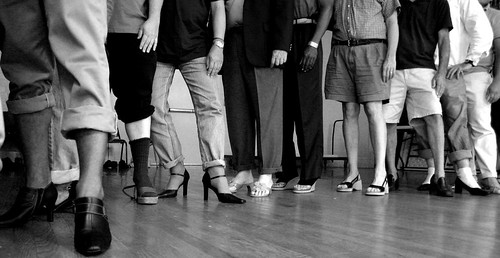 Greatness means being relentless about DELIGHTING your customers!
Greatness means being relentless about DELIGHTING your customers!Great companies, per Jason Jennings, author of several books including "Think Big, Act Small", share certain characteristics. He described these last week during the CCA Global Summit in Denver.
Jennings researches companies around the world to determine which are the fastest [Cabela's], the most productive [World Savings], the most consistent growers [Nucor]. And he continues with his quest - he and his team are now looking to identify the CEOs of America’s Fortune 1000 who have done the best job creating shareholder value, to then examine the connection between ‘values’ and ‘financial performance’. You can learn more via his project blog.
Another example of greatness: Commerce Bank [[Cat and] Dog Days of Summer] the fastest growing bank. The owner purchased Commerce to demonstrate that a bank could be run like a Burger King [he owns BKs] rather than like a bank and could actually prosper by offering convenient times and other customer friendly concepts!
Jennings made the following points:
- Great companies have a cause that's more than about money.
- Great companies master the art of letting go.
- Great companies have figured out that satisfied customers leave.
- Great companies get people to think and act like owners.
- Great companies have leaders who are stewards.
Point 1: The cause is neither a mission nor a vision statement. Rather, it is the very reason for the existence of the organization [think The Power of Stories]. Causes are big, bold, inclusive; they fix something that is wrong and give meaning to people's lives. They provide purpose, fuel passion, drive momentum and build cultures. And, culture, is the ULTIMATE competitive advantage [remember Jack Mitchell's comments in A Good Hug Is Worth: you hire for cultural fit, the rest can be learned.] A leader's responsibility is to create culture and move it through the organization.
Point 2: It's critical to be able to let go of ... yesterday's breadwinners, one's ego, same old/same old so as to be better able to deal with change and rivals. Letting go allows one to become aware of what's happening in the marketplace before the competition does!
Point 3: The new rule is to set out to completely satisfy the right customer. Two-thirds of all customers who stop doing business with you will describe themselves as being satisfied. Complete satisfaction, per W. Earl Sasser - author of "Why Satisfied Customers Defect" from 11/1/95 Harvard Business Review - is the key to generating intense customer loyalty and superior long term financial performance.
Point 4: To think and act like an owner, everyone must know that creating value counts, and how what they do creates value. That means that decision rights go to the right people [i.e., those with the knowledge] and people are compensated for the economic value that they create. They are also held accountable.
Point 5: Stewardship amounts to service over self interest. It demands selflessness, nurturing and authenticity. It means sharing rather than hoarding information [i.e, democratization of information], being accessible, keeping one's hands dirty [i.e., moving the cause and keeping one's hands on the customer], standing for something [i.e, having 4 or 5 guiding principles that are non-negotiable], getting rid of superficial distinctions, being a coach and mentor, and feeling called to serve. The mantra: "Try not. Do or do not; there is NO try." [Yoda/Star Wars].
A true cause builds a culture which believes passionately in delivering complete satsifaction to its customers. That's what moves companies on to greatness!
Tags: greatness, customer service, Jason Jennings, customer satisfaction, cause










